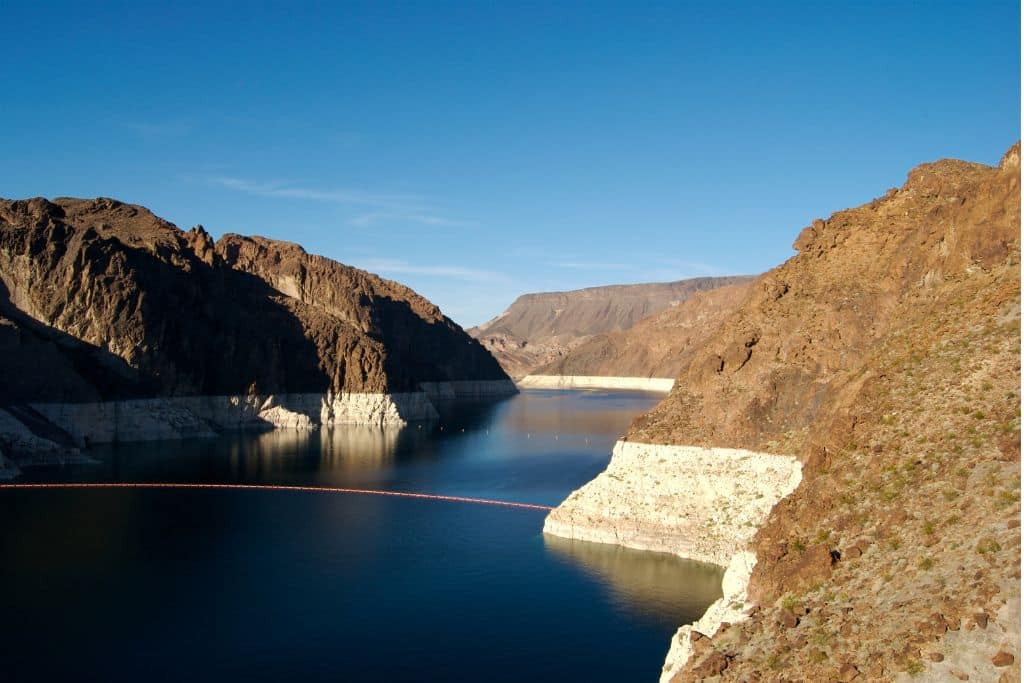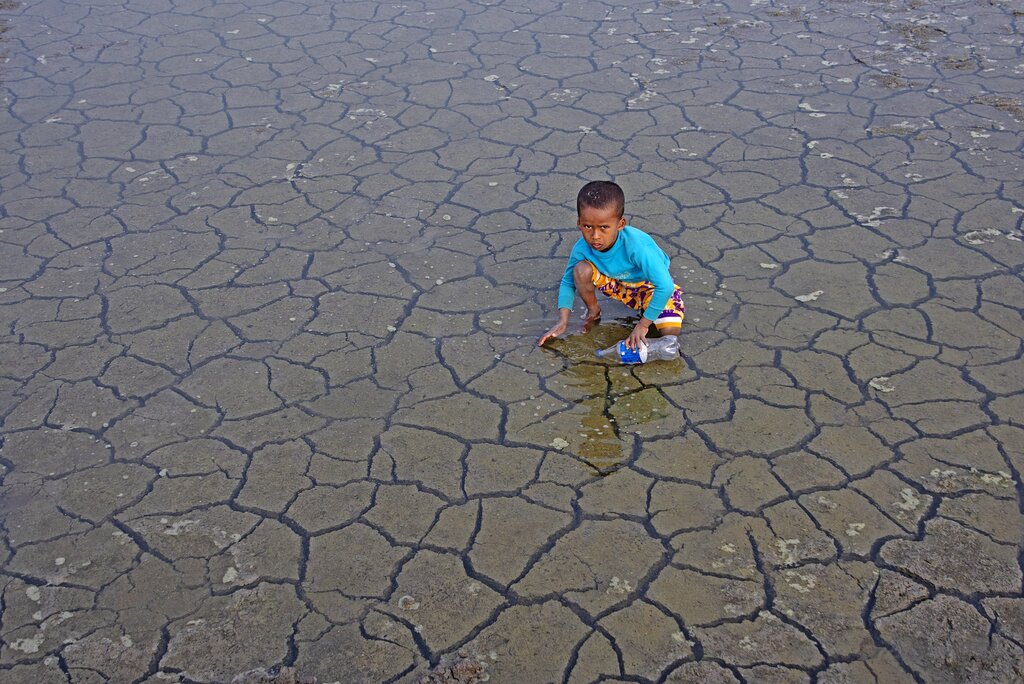Population growth and climate change are major culprits of water scarcity. Yet, we often neglect the impact of governmental policies on water supplies. Politicians have started to notice the preciousness of water, but the policies that they carried out may be detrimental to the interest of other communities. We take a look at four countries with water scarcity and the threats this condition poses to their economies, ecosystems, and communities.
—
Water shortage is a situation in which the supply of fresh water is not sufficient to meet the demand for water, which is directly related to the growth of the world’s population. The World Resources Institute has ranked countries by their water stress and categorised them into five different levels: extremely high, high, medium-high, low-medium, and low baseline water stress. There are 17 countries listed in the category of suffering from extremely high baseline water stress – Qatar, Israel, Lebanon, Iran, Jordan, Libya, Kuwait, Saudi Arabia, Eritrea, United Arab Emirates, San Marino, Bahrain, India, Pakistan, Turkmenistan, Oman and Botswana. 12 of the aforementioned countries are located in the Middle East and North Africa due to their desert climate and their growing water demand.
Increasing the supply of water by developing technologies such as desalination and responsibly using water are all essential to putting an end to water scarcity. Nevertheless, the problem is much more complicated due to its high correlation to geopolitics, which was often glossed over as a decisive factor, but the number of conflicts regarding water has surged over the past few years. The following countries are not necessarily considered extremely water-stressed but are facing or may face water scarcity due to controversial policies carried out either by their own governments or their neighbouring countries.
You might also like: Water Shortage: Causes and Effects
4 Countries with Water Scarcity in 2023
1. United States
According to the World Resources Institute, the US only has “low-medium water stress”, but there are notable regional differences within its borders. The western regions of the US, including California, have significantly higher water stress as the water supply has been continuously decreasing due to “exceptional drought”, an event that has been brought on and exacerbated by climate change. A region will not be categorised in this level unless there are huge losses in agriculture, shortage of water in reservoirs, streams, and wells.
Recently, the federal government implemented a controversial policy to shut down the water supply from a part of the Klamath River on the California-Oregon border to protect native species of fish from extinction and the rights of Native American tribes. About 85% of the farmland, 210,000 acres in the region, requires water from the Klamath River for irrigation; this policy has imposed a huge financial burden on the farmers, especially during the most severe drought of all time. A group of farmers has even threatened to reopen the water supply by force if the federal government fails to provide a satisfactory solution.

Water Shortage in Lake Mead, a reservoir formed by the Hoover Dam on the Colorado River in the Southwestern United States
You might also like: Lake Mead and Colorado River Basin Water Shortage: Causes, Effects, and Policy Solutions
2. Egypt
Egypt is one of a number of countries with water scarcity right now. Though it is considered relatively low water-stressed when compared to its neighbouring countries in the Middle East and North Africa thanks to its access to the Nile River, which supplies about 93% of all water resources in the nation. However, the water supply is being threatened by the development of the Grand Ethiopian Renaissance Dam on the upstream stretch of the Nile River.
When completed, the dam will be a hydroelectric power plant that generates about 6,000 megawatts of electricity – Ethiopia’s current capacity is only about 4,000 megawatts. This dam has huge economic and social potential as it will provide energy to two-thirds of the population living without electricity.
Yet, from Egypt’s perspective, the dam could have catastrophic consequences: as the reservoir fills up, it reduces water flowing downstream. While Egypt is not against the construction of the dam, it has issues with the duration of the filling up. If the dam is filled in 21 years, Egypt will only lose 5% of the total water supply and 2.5% of its agricultural area. But if the dam is filled in five years, Egypt will lose about 36% of the total water supply and half of its agricultural area. This became a diplomatic crisis as Ethiopia said it would take only a further four to six years to fill up the reservoir without the agreement of Egypt. “Many of the wars of the 20th century were about oil but wars of the 21st century will be about water unless we change the way in which we manage it,” said Ismail Serageldin, the former vice president of the World Bank. In the worst-case scenario, Egypt will resort to military action.
You might also like: Are We Running Out of Water?
3. Iraq
Iraq is considered a country with high water stress, a stark contrast to when the Iraqi city of Basra was once called “The Venice of the East”. About 98% of Iraq’s surface water comes from the Tigris River and the Euphrates River, both of which originate from Turkey. In the 1970s, Turkey launched the South-Eastern Anatolia Project with the aim to construct 22 dams and 19 power plants, for which Iraq did not receive fair compensation due to its notorious reputation (Invasion of Kuwait in 1990, etc.) and its lack of international support during the Cold War. The tragedy does not end there; When Iran’s Daryan Dam was inaugurated in 2018, the water supply from the Diyala River – a tributary of the Tigris River to Iraq – was entirely cut off. It is suggested that by 2040, the Tigris River and the Euphrates River will be completely dry within the borders of Iraq. Although the case was recently filed to the International Court of Justice, Iraq’s fate remains unclear.
4. India
The fact that India represents about 18% of the global population, but only possesses 4% of the world’s freshwater puts it in 13th most water-stressed country in the world. It seems that the situation will be soon aggravated after China launched a new ambitious project in 2021 in building the world’s most powerful hydroelectric plant on the upstream stretch of the Brahmaputra River, which flows from Tibet into India. If successful, the dam can generate about 60 gigawatts of electricity, three times more than the Three Gorges Dam, the current largest hydroelectric plant, which is also located in China. The consequences for India can be enormous. According to the Australian Strategic Policy Institute, nearly 30% of India’s water comes from the Brahmaputra River, and the project can reduce the river’s water supply by as much as 60%. The importance of the new project to China is beyond electricity generation and water conservation. India is concerned that China is turning water into a political weapon in order to influence neighbouring countries’ political decisions by treating water supply as a bargaining chip. It is almost impossible that China will abandon its plan in favour of India, given the modern Chinese expansionism and the dispute of the China-India border.
You might also like: Water Scarcity: How Climate Crisis is Unfolding in India
Universal Right to Water
These four countries with water scarcity all point to the same question: who owns the natural resources? In general, national borders can define the right to natural resources of each country, but this is not the case for water as most believe that manipulating water supplies is morally wrong. Having free access to freshwater is a basic human right. Yet, the privatisation of water has unfortunately become inevitable. But considering the law of supply and demand, imposing a cost on users can potentially reduce excessive use of water. Though as global inequality worsens, more people will be unable to afford clean, drinking water. Ultimately, what we need is to have international institution to define the right to water for each country.
Featured image by Chinmoy Biswas
You might also like: 15 Biggest Environmental Problems Of 2024
This story is funded by readers like you
Our non-profit newsroom provides climate coverage free of charge and advertising. Your one-off or monthly donations play a crucial role in supporting our operations, expanding our reach, and maintaining our editorial independence.
About EO | Mission Statement | Impact & Reach | Write for us


















